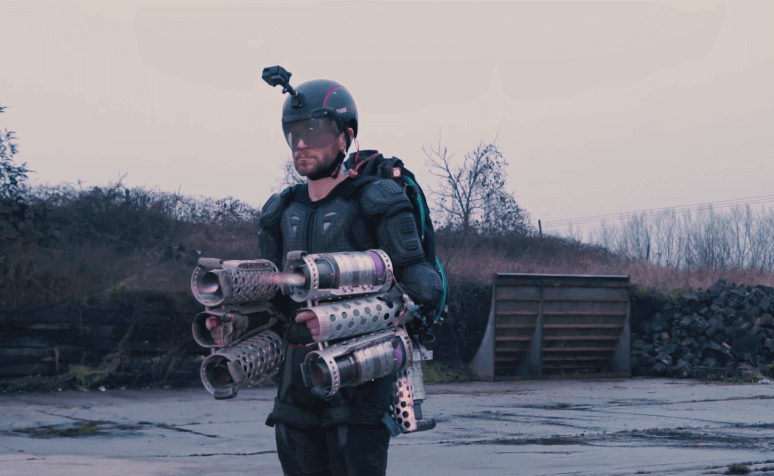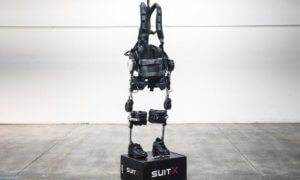There’s been a lot of talk about Iron Man cosplay suits done right or parts of the Marvel character’s equipment re-imagined for real life. But, so far, we haven’t really seen anybody try to become the superhero and take off the ground via jet engines. Until this UK businessman showed up #objectmagic
Richard Browning is an ex-Royal Marine reservist who has spend more than nine months investing in the idea of a flying man and working to see it through. What was initially a flapping drone became a super suit with jet engines attached to the arms and back. How does it feel flying it? Browning describes it as “riding a bicycle in three dimensions”. To go forward, the inventor moves his arms back. To gain more speed, he simply takes his arms in and pushes the chest out.
In order to handle that much power from the engines, Browning trains regularly, improving his strength in the upper body as well as learning how to balance his core. As time passed, he has become more skilled at walking on air in a straight line. Falls are less frequent and never as dangerous as people imagine it. This is because:
a. the top speed of the rig is not faster than that employed by a human during runs
b. the fuel used was chosen carefully to avoid explosions of any kind
As such, Browning always stays pretty close to the ground, flying a couple of meters above it. During flight, his hands are covered by the engine setup so it’s impossible to see that he actually needs to keep a button pressed all the time to stay in the air. The feat in itself is pretty impressive, as you can see in this special video made by partner Red Bull:
As tempting as it is, Browning doesn’t see himself as a superhero. Instead, he believes this is a journey of pushing limits and seeing what can mind, body and machine accomplish with the right resources and ambition.
For those of you who are itching to give it a go, bare in mind that this kind of suit doesn’t come cheap. In fact, it could never be used for recreational purposes by someone who wasn’t willing to spend thousands of dollars on it. It could be helpful in other situations, though, such as EVAC teams trying to save people from hot spots. But there’s no realistic intention of doing that for now, as the suit is still in testing and very much a personal hobby.
Follow TechTheLead on Google News to get the news first.























